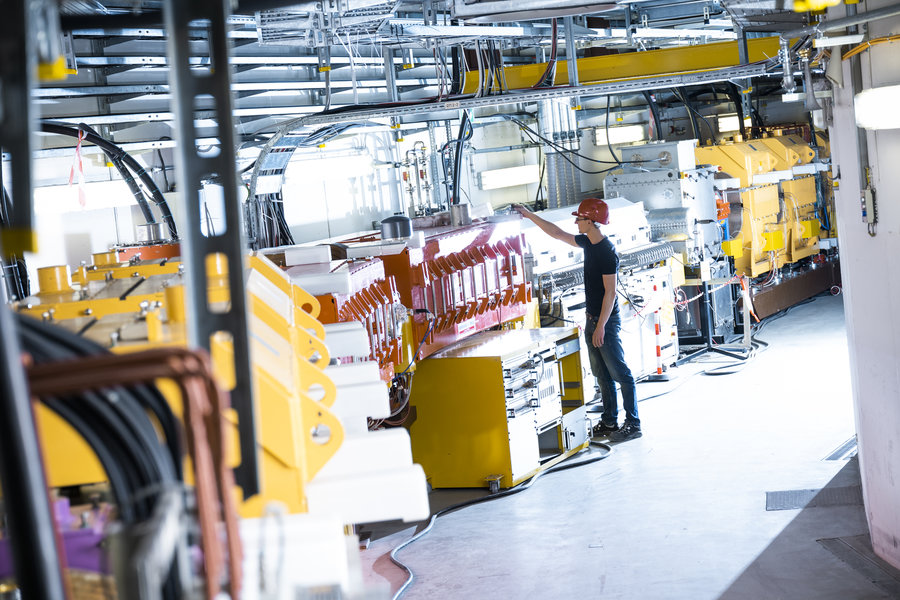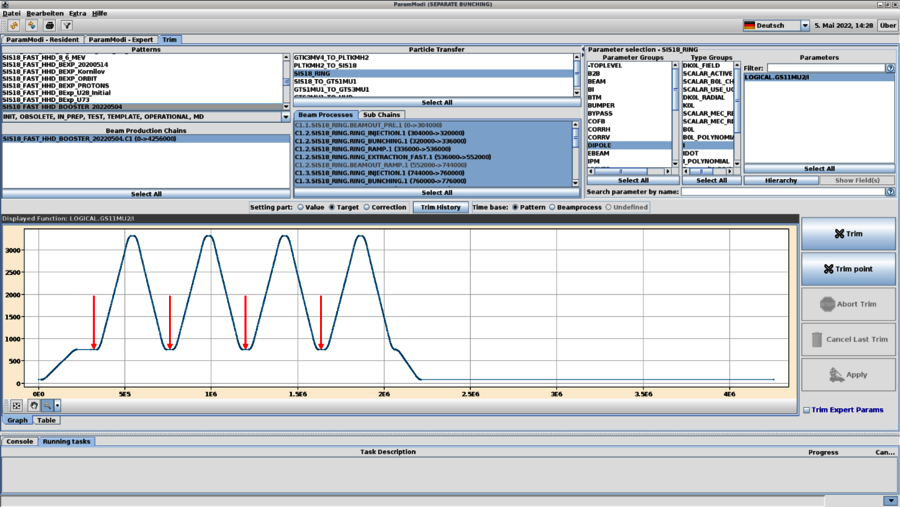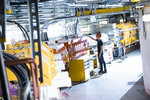Major progress at the ring accelerator SIS18: Booster operation demonstrated for the first time
09.09.2022 |
The ring accelerator SIS18 on campus at GSI/FAIR has been doing powerful work in accelerating ions for years. It is currently being upgraded for the central task it will undertake for the future FAIR accelerator center: It will serve as the injector for the large FAIR ring accelerator SIS100, the heart of the FAIR facility currently under construction at GSI. For the first time, booster operation has now been realized at SIS18, achieving the high repetition rate that will be needed in the future to reach the highest intensities at FAIR.
With the future requirements for FAIR, the operation of SIS18 will be fundamentally different from the current operation to supply experiments: To achieve the planned highest intensities in the five times longer SIS100, the SIS18 must accelerate and extract the ion beam four times within one second. This results in a repetition rate of 2.7 hertz, significantly higher than the rate of maximum one hertz that has been common in experimental operation so far. Operation with heavy ions with low charge states, as intended for FAIR (only with them the highest intensities can be achieved), further increases demands on the devices.
To enable booster operation, which was previously not required to operate the current experimental program at GSI, various technical changes have been made over the past 15 years as part of an extensive upgrade program. In particular, the performance of the main power supplies and the high-frequency acceleration systems was improved to achieve the shortening of the acceleration cycle required for booster operation.
Realizing the high ramp rate of the magnetic field in the SIS18's deflecting magnets of ten tesla per second is very challenging. It requires the magnetic current to be brought up to a maximum current of 3500 amps at a rate of 19,000 amps per second. The current generated by the power supply must not deviate from the specified profile by more than 0.01 percent at any time. These requirements can only be met by special power supply units with outstanding control characteristics. The high-frequency facilities of SIS18 were extended by a group of broadband MA cavities, which together provide an accelerating voltage of 40 kilovolt in the frequency range from 0.4 to 1.6 megahertz. Only with these cavities, the energy of low charge state heavy ions can be increased sufficiently per revolution to follow the fast magnetic ramp.
Taking all devices together, the SIS18 reaches pulse powers in the range of 50 megawatts in booster operation. The special characteristic of the SIS18 is that, unlike other very fast-pulsed synchrotrons, it is not constructed as part of an oscillating circuit and thus always delivers the same pulses at a fixed repetition frequency. Instead, it offers the flexibility to change the settings of all devices from cycle to cycle to supply the various experiments.
In addition to the technical demands on the SIS18 equipment, booster operation also brings new challenges for the timing control systems due to its high repetition rate. For example, it must be ensured that the four injections from the linear accelerator UNILAC take place exactly when the SIS18 is ready for injection, without having to wait at this point as in normal operation. In order to demonstrate the booster operation, the control systems were adapted in such a way that the injections could be performed with a known procedure, previously used for the "multi-multiturn injection". With this intermediate step, a U28+ beam could be accelerated and extracted at a repetition rate of 2.3 hertz for the first time.
After this first successful booster demonstration, further extensive developments in the control system for FAIR are required in the next step for the routine realization of booster operation. In particular, the timing system for the UNILAC must be renewed in order to combine the independent parallel operation of the UNILAC with those conditions that result from synchronization with the SIS18 in booster operation. (BP)















